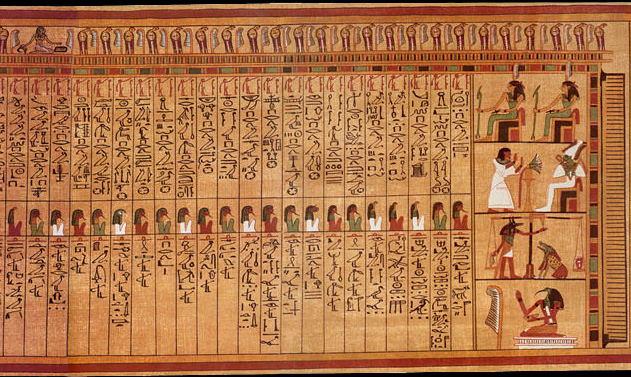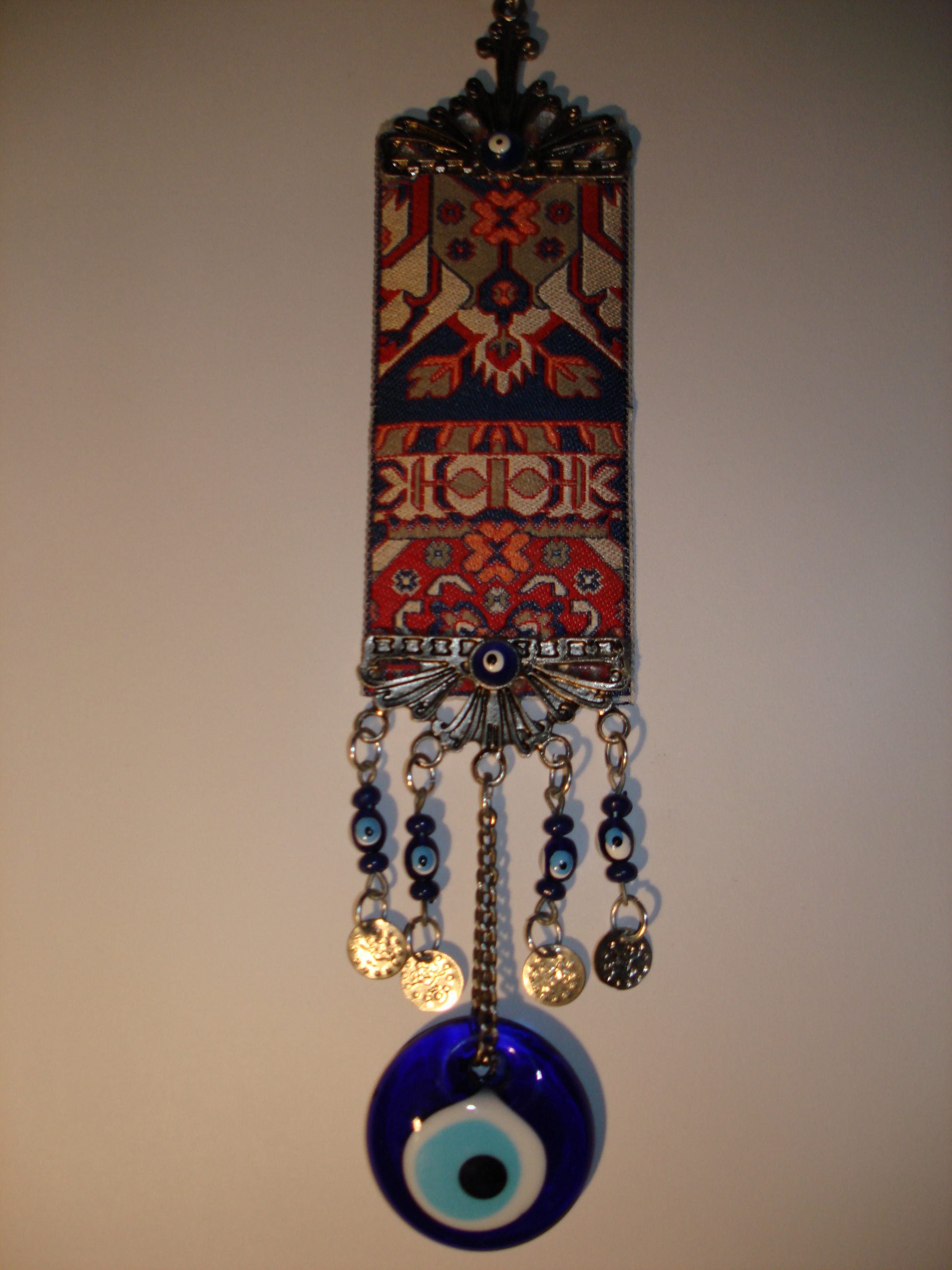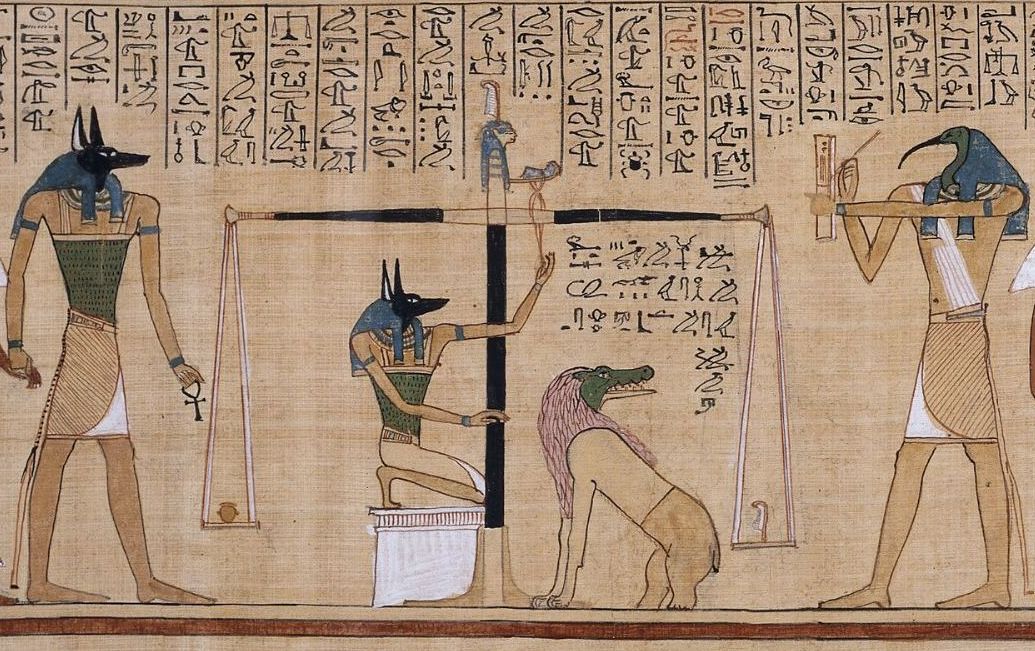|
Nehebkau
Nehebkau (also spelled Nehebu-Kau) is the primordial snake god in ancient Egyptian mythology. Although originally considered an evil spirit, he later functions as a funerary god associated with the afterlife. As one of the forty-two assessors of Ma’at, Nehebkau was believed to judge the deceased after death and provide their souls with ka – the part of the soul that distinguished the living from the dead. Nehebkau was ultimately considered a powerful, benevolent and protective deity. In late mythology, he is described as a companion of the sun god Re and an attendant of the deceased King. As he is so closely associated with the sun god, his name was evoked in magical spells for protection. His festival was widely celebrated throughout the Middle and New Kingdoms. Name Nehebkau's name – also spelled Neheb-Kau and Nhb-K3w – has been translated in many ways by Egyptologists. These translations include: “that which gives Ka”; “he who harnesses the spirits”; ... [...More Info...] [...Related Items...] OR: [Wikipedia] [Google] [Baidu] |
Nehebkau - Spell-87 -Book Of The Dead
Nehebkau (also spelled Nehebu-Kau) is the primordial snake god in ancient Egyptian mythology. Although originally considered an evil spirit, he later functions as a funerary god associated with the afterlife. As one of the forty-two assessors of Ma’at, Nehebkau was believed to judge the deceased after death and provide their souls with ka – the part of the soul that distinguished the living from the dead. Nehebkau was ultimately considered a powerful, benevolent and protective deity. In late mythology, he is described as a companion of the sun god Re and an attendant of the deceased King. As he is so closely associated with the sun god, his name was evoked in magical spells for protection. His festival was widely celebrated throughout the Middle and New Kingdoms. Name Nehebkau's name – also spelled Neheb-Kau and Nhb-K3w – has been translated in many ways by Egyptologists. These translations include: “that which gives Ka”; “he who harnesses the spirits”; t ... [...More Info...] [...Related Items...] OR: [Wikipedia] [Google] [Baidu] |
Renenutet
Renenūtet (also transliterated Ernūtet, Renen-wetet, Renenet) was a goddess of nourishment and the harvest in the ancient Egyptian religion. The importance of the harvest caused people to make many offerings to Renenutet during harvest time. Initially, her cult was centered in Terenuthis. Renenutet was depicted as a cobra or as a woman with the head of a cobra. The verbs "to fondle, to nurse, or rear" help explain the name Renenutet. This goddess was a "nurse" who took care of the pharaoh from birth to death. She was the female counterpart of Shai, "destiny", who represented the positive destiny of the child. Renenutet was called Thermouthis or Hermouthis in Greek. She embodied the fertility of the fields and was the protector of the royal office and power. Sometimes, as the goddess of nourishment, Renenutet was seen as having a husband, Sobek. He was represented as the Nile River, the annual flooding of which deposited the fertile silt that enabled abundant harvests. The t ... [...More Info...] [...Related Items...] OR: [Wikipedia] [Google] [Baidu] |
Assessors Of Maat
The Assessors of Maat were 42 minor ancient Egyptian deities of the Maat charged with judging the souls of the dead in the afterlife by joining the judgment of Osiris in the Weighing of the Heart.Hart 1986, pp. 34–5.Wilkinson 2003, pp. 84–5. Description Negative Confessions and psychostasia Chapter 125 of the Book of the Dead lists names and provenances (either geographical or atmospheric) of the Assessors of Maat. A declaration of innocence corresponds to each deity: it is pronounced by the dead himself, to avoid being damned for specific "sins" that each of the 42 Judges is in charge of punishing. The deceased was accompanied in the presence of Osiris by the psychopomp god Anubis – where he would have declared that he was guilty of none of the "42 sins" against justice and truth by reciting a text known as "Negative confessions". The heart ( ib / jb) of the deceased was then weighed on a two-plate scale: a plate for the heart, the other for the feather of Maat. Ma ... [...More Info...] [...Related Items...] OR: [Wikipedia] [Google] [Baidu] |
Nehmetawy
Nehmetawy ''(nḥm.t-ˁw3ỉ;'' "she who embraces those in need") is a goddess in the ancient Egyptian religion. She is not very widely known. Nehmetawy was the wife of snake god Nehebu-kau, or in other places of worship, like in Hermopolis, the wife of Thoth. Her depictions are anthropomorph, with a sistrum A sistrum (plural: sistra or Latin sistra; from the Greek ''seistron'' of the same meaning; literally "that which is being shaken", from ''seiein'', "to shake") is a musical instrument of the percussion family, chiefly associated with ancient ...-shaped headdress, often with a child in her lap.Richard Wilkinson: The Complete Gods and Goddesses of Ancient Egypt. London, Thames and Hudson, 2003. p.156 References Egyptian goddesses {{Egyptian-myth-stub ... [...More Info...] [...Related Items...] OR: [Wikipedia] [Google] [Baidu] |
Neheb
Neheb is mentioned in the Palermo Stone as a Predynastic Egyptian king who ruled in Lower Egypt Lower Egypt ( ar, مصر السفلى '; ) is the northernmost region of Egypt, which consists of the fertile Nile Delta between Upper Egypt and the Mediterranean Sea, from El Aiyat, south of modern-day Cairo, and Dahshur. Historically, .... As there is no other evidence of such a ruler, he may be a mythical king preserved through oral tradition, or may even be completely fictitious.Wilkinson, Toby A. H. (2000). ''Royal Annals of Ancient Egypt.'' p.85 New York: Columbia University Press). . References People whose existence is disputed Pharaohs only mentioned in the Palermo Stone Year of birth unknown Year of death unknown {{AncientEgypt-bio-stub ... [...More Info...] [...Related Items...] OR: [Wikipedia] [Google] [Baidu] |
Amulet
An amulet, also known as a good luck charm or phylactery, is an object believed to confer protection upon its possessor. The word "amulet" comes from the Latin word amuletum, which Pliny's ''Natural History'' describes as "an object that protects a person from trouble". Anything can function as an amulet; items commonly so used include statues, coins, drawings, plant parts, animal parts, and written words. Amulets which are said to derive their extraordinary properties and powers from magic or those which impart luck are typically part of folk religion or paganism, whereas amulets or sacred objects of formalised mainstream religion as in Christianity are believed to have no power of their own without faith in Jesus and being blessed by a clergyman, and they supposedly will also not provide any preternatural benefit to the bearer who does not have an appropriate disposition. Talisman and amulets have interchangeable meaning. Amulets refer to any object which has the power to ... [...More Info...] [...Related Items...] OR: [Wikipedia] [Google] [Baidu] |
Osiris
Osiris (, from Egyptian ''wsjr'', cop, ⲟⲩⲥⲓⲣⲉ , ; Phoenician: 𐤀𐤎𐤓, romanized: ʾsr) is the god of fertility, agriculture, the afterlife, the dead, resurrection, life, and vegetation in ancient Egyptian religion. He was classically depicted as a green-skinned deity with a pharaoh's beard, partially mummy-wrapped at the legs, wearing a distinctive atef crown, and holding a symbolic crook and flail. He was one of the first to be associated with the mummy wrap. When his brother, Set cut him up into pieces after killing him, Osiris' wife Isis found all the pieces and wrapped his body up, enabling him to return to life. Osiris was widely worshipped until the decline of ancient Egyptian religion during the rise of Christianity in the Roman Empire. Osiris was at times considered the eldest son of the earth god Geb and the sky goddess Nut, as well as being brother and husband of Isis, and brother of Set, Nephthys, and Horus the Elder, with Horus ... [...More Info...] [...Related Items...] OR: [Wikipedia] [Google] [Baidu] |
Ancient Egyptian Concept Of The Soul
The ancient Egyptians believed that a soul ( kꜣ and bꜣ; Egypt. pron. ka/ba) was made up of many parts. In addition to these components of the soul, there was the human body (called the ''ḥꜥ'', occasionally a plural '' ḥꜥw'', meaning approximately "sum of bodily parts"). According to ancient Egyptian creation myths, the god Atum created the world out of chaos, utilizing his own magic ( ḥkꜣ). Because the earth was created with magic, Egyptians believed that the world was imbued with magic and so was every living thing upon it. When humans were created, that magic took the form of the soul, an eternal force which resided in and with every human. The concept of the soul and the parts which encompass it has varied from the Old Kingdom to the New Kingdom, at times changing from one dynasty to another, from five parts to more. Most ancient Egyptian funerary texts reference numerous parts of the soul: Collectively, these spirits of a dead person were called the ... [...More Info...] [...Related Items...] OR: [Wikipedia] [Google] [Baidu] |
Book Of The Dead
The ''Book of the Dead'' ( egy, 𓂋𓏤𓈒𓈒𓈒𓏌𓏤𓉐𓂋𓏏𓂻𓅓𓉔𓂋𓅱𓇳𓏤, ''rw n(y)w prt m hrw(w)'') is an ancient Egyptian funerary text generally written on papyrus and used from the beginning of the New Kingdom (around 1550 BCE) to around 50 BCE. The original Egyptian name for the text, transliterated ''rw nw prt m hrw'', is translated as ''Book of Coming Forth by Day'' or ''Book of Emerging Forth into the Light''. "Book" is the closest term to describe the loose collection of texts consisting of a number of magic spells intended to assist a dead person's journey through the '' Duat'', or underworld, and into the afterlife and written by many priests over a period of about 1,000 years. Karl Richard Lepsius introduced for these texts the German name ''Todtenbuch'' (modern spelling ''Totenbuch''), translated to English as Book of the Dead. The ''Book of the Dead'', which was placed in the coffin or burial chamber of the deceased, was part of a tr ... [...More Info...] [...Related Items...] OR: [Wikipedia] [Google] [Baidu] |
Egyptian - Neheb-kau - Walters 481615 - Right
Egyptian describes something of, from, or related to Egypt. Egyptian or Egyptians may refer to: Nations and ethnic groups * Egyptians, a national group in North Africa ** Egyptian culture, a complex and stable culture with thousands of years of recorded history ** Egyptian cuisine, the local culinary traditions of Egypt * Egypt, the modern country in northeastern Africa ** Egyptian Arabic, the language spoken in contemporary Egypt ** A citizen of Egypt; see Demographics of Egypt * Ancient Egypt, a civilization from c. 3200 BC to 343 BC ** Ancient Egyptians, ethnic people of ancient Egypt ** Ancient Egyptian architecture, the architectural structure style ** Ancient Egyptian cuisine, the cuisine of ancient Egypt ** Egyptian language, the oldest known language of Egypt and a branch of the Afroasiatic language family * Copts, the ethnic Egyptian Christian minority ** Coptic language or Coptic Egyptian, the latest stage of the Egyptian language, spoken in Egypt until the 17th centur ... [...More Info...] [...Related Items...] OR: [Wikipedia] [Google] [Baidu] |
The Two Lands
In Egyptian history, the Upper and Lower Egypt period (also known as The Two Lands) was the final stage of prehistoric Egypt and directly preceded the unification of the realm. The conception of Egypt as the Two Lands was an example of the dualism in ancient Egyptian culture and frequently appeared in texts and imagery, including in the titles of Egyptian pharaohs. The Egyptian title '' zmꜣ- tꜣwj'' (Egyptological pronunciation ''sema-tawy'') is usually translated as "Uniter of the Two Lands" and was depicted as a human trachea entwined with the papyrus and lily plant. The trachea stood for unification, while the papyrus and lily plant represent Lower and Upper Egypt. Standard titles of the pharaoh included the prenomen, quite literally "Of the Sedge and Bee" (nswt-bjtj, the symbols of Upper and Lower Egypt) and "lord of the Two Lands" (written '' nb-tꜣwj''). Queens regnant were addressed as pharaohs and male. Queens consort might use a feminine versions of the second titl ... [...More Info...] [...Related Items...] OR: [Wikipedia] [Google] [Baidu] |
Wilhelm Max Müller
Wilhelm Max Müller (15 May 1862 – 12 July 1919) was a German-born American orientalist. Biography Müller was born at Gleißenberg, Germany. He received his higher education in Erlangen, Berlin, Munich, and Leipzig, where he received his Ph.D. He was one of the last students of the Egyptologist Georg Ebers. Müller emigrated to the United States in 1888. He was a professor at the Reformed Episcopal Seminary in Philadelphia beginning in 1890. During several years (1904, 1906, 1910), he engaged in archaeological work in Egypt for the Carnegie Institution. He lectured on Egyptology at the University of Pennsylvania, and purchased papyri in Egypt for the University Museum. He died in a drowning accident in Wildwood, New Jersey, in July 1919. Works * ''Asien und Europa nach altägyptischen Denkmälern'' (lit. "Asia and Europe on Egyptian Monuments", 1893) * ''Die Liebespoesie der alten Ägypter'' (lit. "The Love Poetry of the Ancient Egyptians", 1899) *'' * ''Egyptian Mytholo ... [...More Info...] [...Related Items...] OR: [Wikipedia] [Google] [Baidu] |


.jpg)




